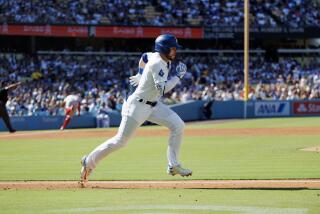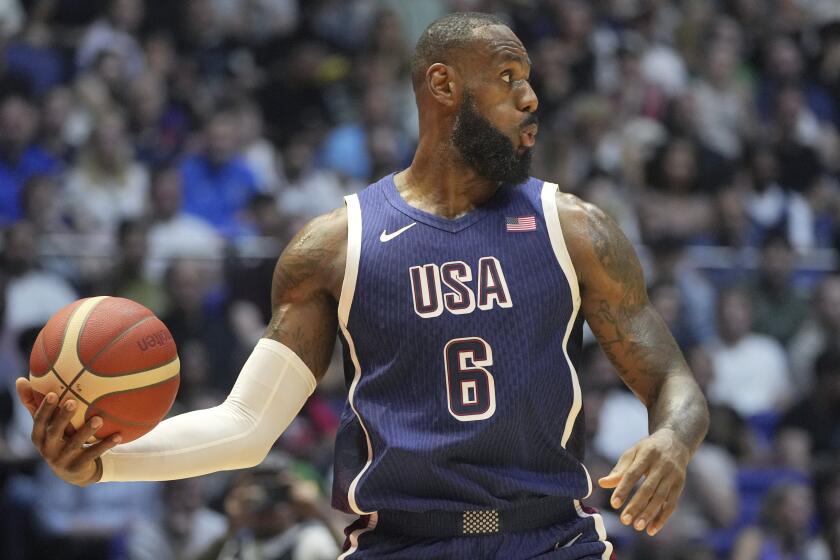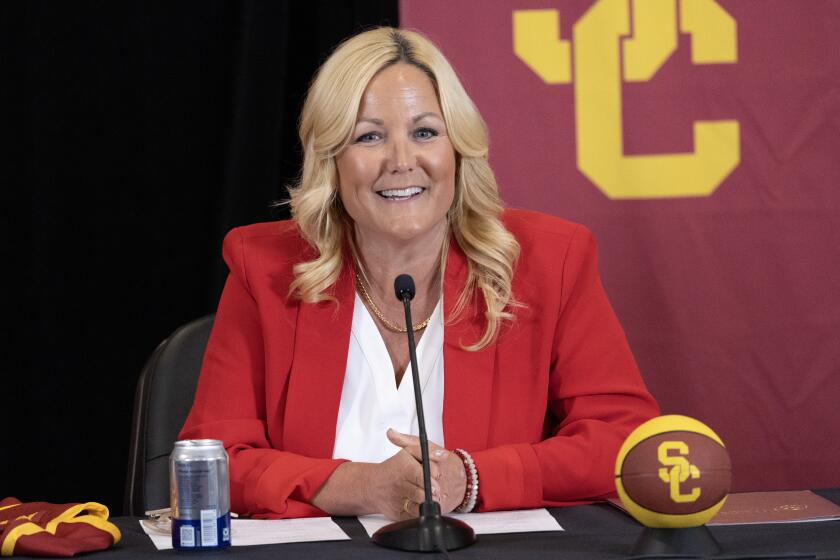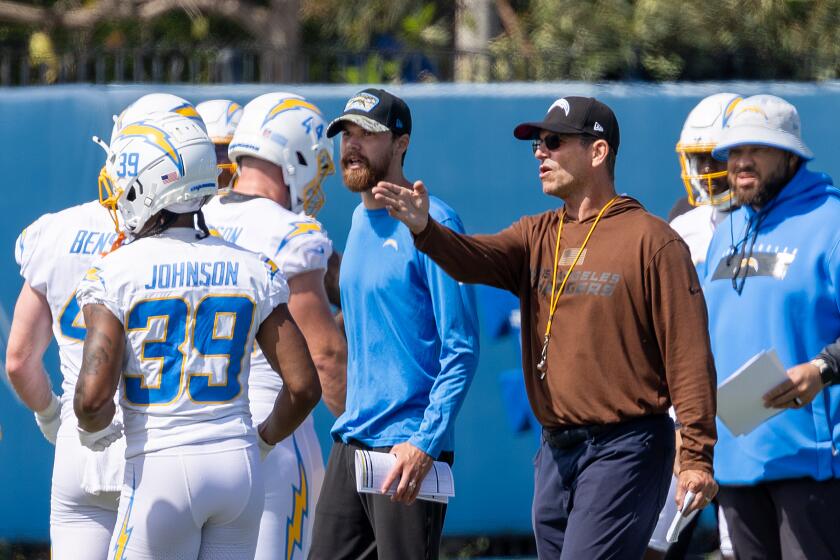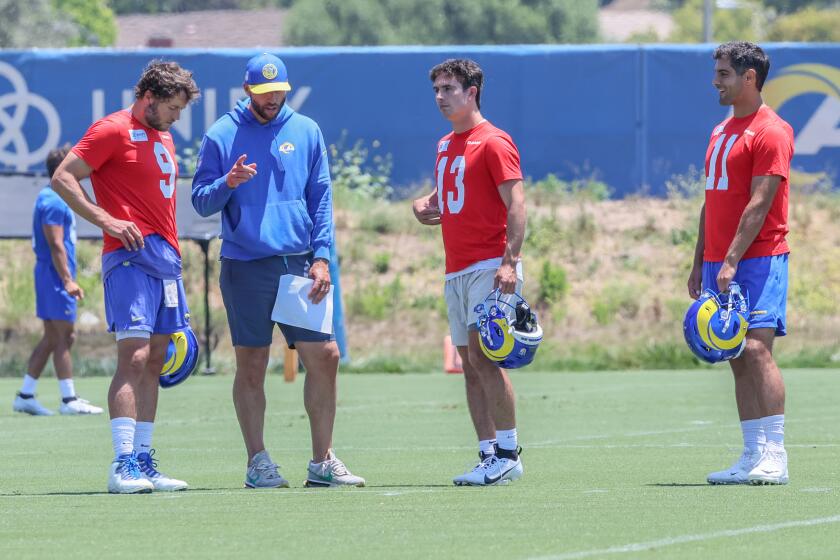Let the NBA Finals Grow Up and Move to a Place of Its Own
If the NBA is doing all right without our counseling, you can imagine the towering heights it would scale soliciting the erudition made available here.
All the NBA has to do is make an appointment, and it will be advised to forget this home-and-home madness in the final round of its playoffs and anchor the thing.
It would follow the path of the NCAA Final Four and the Super Bowl, not to mention the Grey Cup and the World Cup.
And do you see the Rose Bowl float?
The Rose Bowl each New Year’s matches the champion of the Big Ten against that of the Pacific-10. At season’s start, we don’t know who those champions are going to be, but we know where they are going to play.
Anchoring a major event, whose location is posted long in advance, gives it stability. Teams and their fans can point for it. Hotel arrangements can be made calmly. Players are spared travel fatigue.
And, most important, a neutral site assures a truer test of skills, especially in basketball in which home court is rated an edge so colossal.
“OK,” you claim, “in the present NBA setup, teams trade home courts, meaning a standoff.”
And the answer is, an edge in any athletic contest, regardless of which team gets it, divests that contest of its character.
If home crowds can tilt outcomes, as they seem to do in basketball, you have reduced the final to some kind of sideshow.
So what the NBA wants to do is give folks home-and-home playoffs in the first three rounds of the tournament, then anchor the big casino in a neutral spot.
Cities would bid for it, precisely as they bid for the Super Bowl and the NCAA, and guaranteed sellouts to each performance would be a condition of the bidding.
In this concept, the NBA would have a superior final and a promotional jewel on its hands, and, thoughtfully, it would ask itself why it didn’t consult this man earlier.
If it was noted here recently that Lesley Visser of CBS showed up for an NBA telecast wearing pearls, a fashion anachronism for an exudative game such as basketball, what can we say about Cotton Fitzsimmons, coach of Phoenix?
Cotton was seen at a Laker game attired in a double-breasted suit, from whose lapel pocket protruded a smart black handkerchief.
Fashionwise, he obviously was determined not to play second violin to Pat Riley, coach of the Lakers, who selected for the occasion a dark blue suit bearing the unmistakable stamp of custom tailoring.
Detroit’s Chuck Daly, too, is seen on the court sartorially splendid, leading one to ask whether basketball coaches are aware of their environment?
Folks, we are talking glorified gymnasiums, inhabited by players shod in sneakers and by fans dressed for a day at the dock.
Among coaches, what has happened to the old philosophers in a sweat shirt?
In baseball, a manager wears the get-up of his players, leading to the suggestion here that basketball coaches appear courtside in underwear.
In the aftermath of their departure from the current tournament, the Lakers sit in shock, unable to believe they were removed from the proceedings so early.
They have explored a number of causes, not among them the hard realization that teams--even giants--sooner or later flame out.
If they don’t, why are the Yankees on their hindquarters today? Why are the Cowboys, the Raiders, the Celtics and the Canadiens?
No one has a lock on winning, leading you to suspect the Lakers either aren’t thinking well, or they are over-dramatizing their demise, grandstanding for their supporters.
The Lakers enjoyed an uncommonly long run. There were fawning fans and parades down Broadway. There were sellout crowds, at the steepest ticket prices in the game.
Now they pick up the fragments, and what has happened is neither the surprise, nor the human tragedy, they paint.
The case of David Robinson, center for San Antonio voted NBA Rookie of the Year, would seem to pose a problem for the United States Naval Academy in connection with future recruiting of basketball centers.
It generally is accepted in the sport, college and pro, that the so-called “big man” is a necessary adjunct of a team’s success.
It appears to be a fact, too, that a big man--say, 7 feet--can be excused prematurely from post-Academy duty because of his height.
Whereas the usual Annapolis graduate is asked to serve the Navy a minimum of five years, Robinson was permitted to leave after two because he had risen to 7 feet 1.
He was shorter, it is claimed, when the academy recruited him as an undergraduate player.
So how does the academy now proceed? If men are trained basically as naval officers, not as basketball players, must sights now be set on centers who rise maybe 6 feet 6?
That means, by today’s standards, the academy must go without the “big man.”
Or does the Navy Department change specifications on its submarines, accommodating 7-foot officers, and on destroyers, minesweepers, aircraft carriers and the like?
National security is a small risk in the context of running a basketball team without the big guy at center.
More to Read
Go beyond the scoreboard
Get the latest on L.A.'s teams in the daily Sports Report newsletter.
You may occasionally receive promotional content from the Los Angeles Times.
